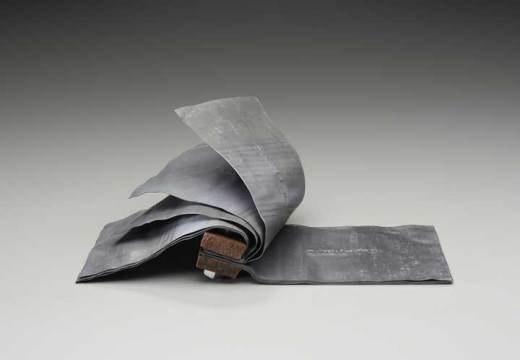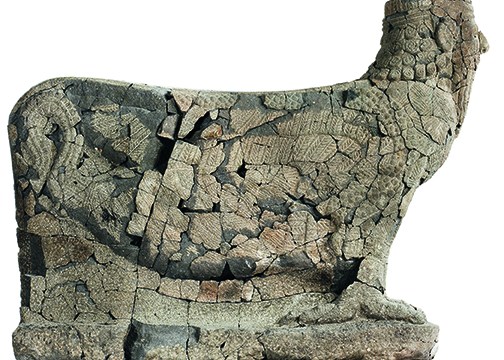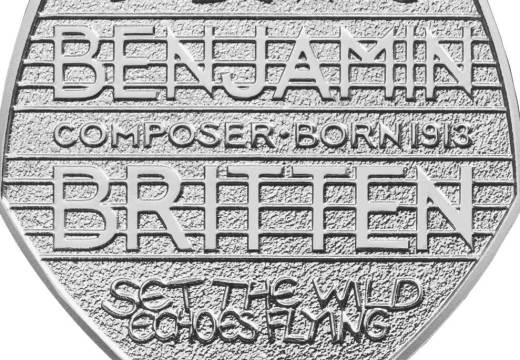What is it about machinery that so fascinates artists? From Leonardo to the Futurists and beyond, the theme has produced some of the most inventive and important works in art history.
Conrad Shawcross is an obvious example of a modern-day machine fancier. His work involves lots of moving parts, ‘Heath Robinson’ contraptions that quite literally go through the motions for their own sake. I’ve never been convinced – it’s all quite impressive, sure, but to what ends does his art perform? I was intrigued, then, when I heard about his most recent project at the Vinyl Factory’s huge outpost in Soho.
One of Shawcross’s obsessions is the pioneering 19th-century mathematician Ada Lovelace. Lovelace, the only legitimate child of Lord Byron, was a colleague of Charles Babbage, the man widely credited with developing the concept of the computer. But it was Ada Lovelace herself who was responsible for writing what is considered to be the first ever computer program – over a century before the technology to read it was invented.
Her theory – namely that if fundamental elements of pitch, harmony and composition could be transcribed on paper, then surely they could also be written into the workings of a machine – was astonishingly modern. The engine intended to test her programme was never completed, and so to the detriment of progress, her ideas were never proven during her lifetime. But now, at a time when almost all recorded music is at some point passed through a computer, it is possible to put her thesis to trial.
Shawcross has done something of the kind. He recruited several musicians to create pieces based on the ‘dancing’ motions of a modified welding robot. It’s a choreography based on a ‘pathway’ derived from Babbage & Lovelace’s algorithms – a relationship between movement and music that is ‘like early jazz’, as Shawcross puts it, or like the score to a silent film. The ADA Project was first unveiled at the Palais de Tokyo in Paris, but even now, at the end of its October residency at the Vinyl Factory, it remains a work in progress.
The robot itself is a tripod-mounted thing with a piercingly bright light on the tip of its nozzle – an impressive bit of kit. When I visited it was fenced off, along with the musicians, in the middle of an enormous converted car park. There was no denying the ambition of the project – but was it all worth it?
I must have been a tall order to create music based on the stilted motions of a machine. Three of the four compositions – by Holly Herndon, Tamara & Mylo and Beatrice Dillon & Rupert Clervaux – consequently seem a little forced. It seemed as though there might be a good reason why few people have previously bothered to invert the relationship between music and dance.
We are supposed to watch the robot rather than the musicians, Shawcross reminded us on the opening night, pacing around like the MC at a wrestling event. The trouble is that the robot just wasn’t very interesting – it bobbed about a bit and did the odd twirl, but was not the most charismatic of performers.
My scepticism had almost won out by the time the final performance, by composer Mira Calix, began. But then something extraordinary happened. Calix’s soaring aria appeared to send the robot into spasms as it began ducking and diving, as Shawcross put it, ‘like a wounded animal’.
This last act was a triumphant synthesis of music and machinery, a balletic and actually rather moving display. For about four minutes, I got the point of Shawcross’s work. While the ADA Project is undoubtedly a flawed undertaking, it’s worth it for its astonishing final act. What Shawcross decides to do with it next could be very interesting indeed.
‘Conrad Shawcross: The ADA Project’ was at the Vinyl Factory from 11–31 October.
Editor’s note: This article was amended on 5 November 2014 to correct a misunderstanding about the connection between Lovelace’s work and the performance itself.
Unlimited access from just $16 every 3 months
Subscribe to get unlimited and exclusive access to the top art stories, interviews and exhibition reviews.














![Masterpiece [Re]discovery 2022. Photo: Ben Fisher Photography, courtesy of Masterpiece London](http://www.apollo-magazine.com/wp-content/uploads/2022/07/MPL2022_4263.jpg)
Has the Fitzwilliam lost the hang of things?